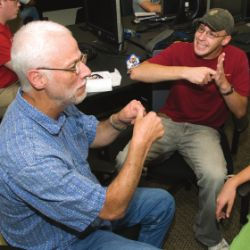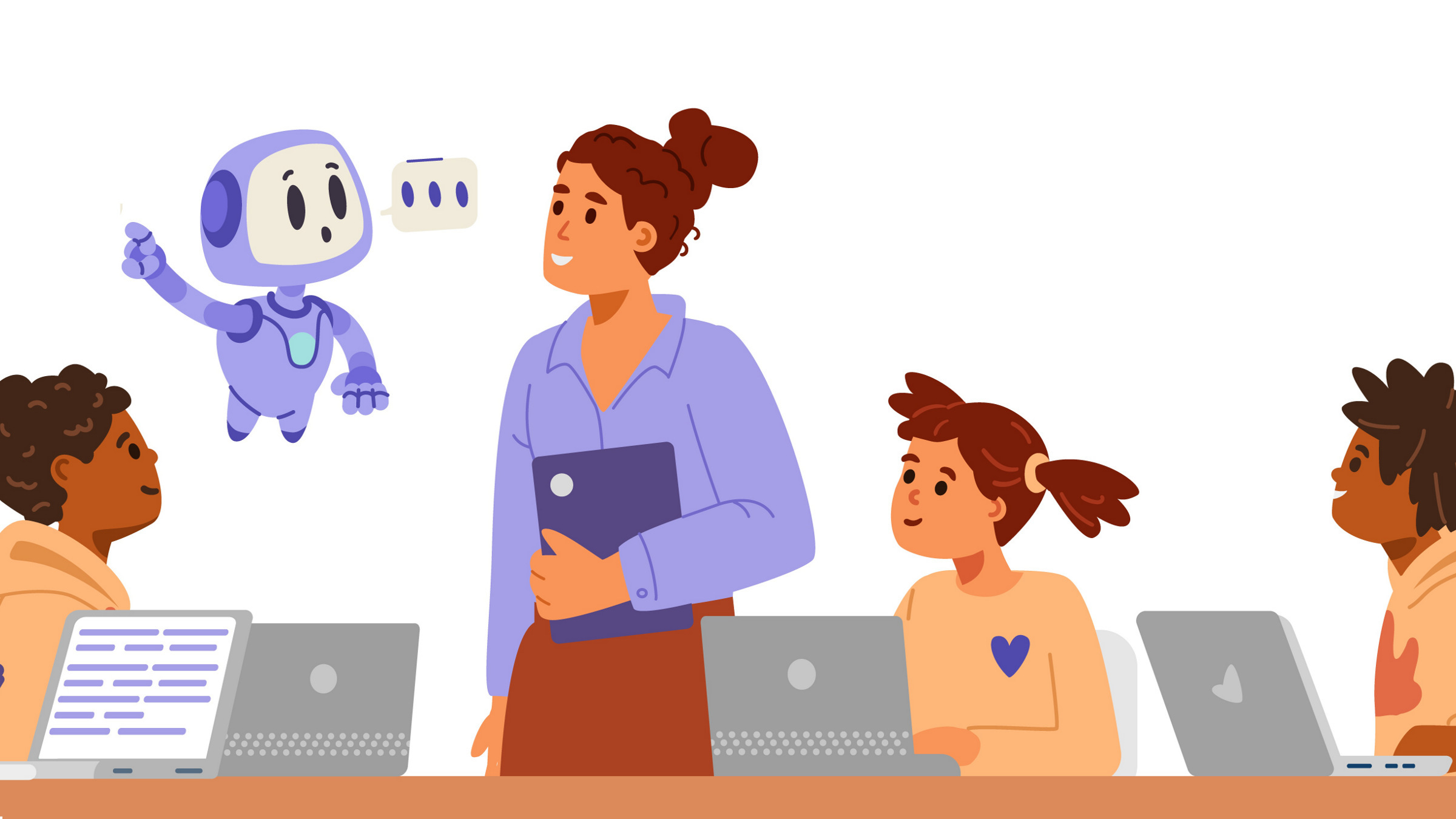
This is the first in a new Communications Viewpoints Broadening Participation column series that will be edited by me. The purpose of the column is inform, invigorate conversation, and inspire action in the computing community concerning issues in broadening participation. This column will tend to be U.S.-centric because broadening participation in the U.S. is what I know best. What I mean by broadening participation in the U.S. is increasing the inclusion of individuals from underrepresented groups, such as women, Native Americans, African Americans, Hispanics, and persons with disabilities, in the computing field at all levels. In other countries and regions of the world underrepresented groups would be defined differently. I distinguish “broadening participation” from “diversity,” which is a much broader concept. Diversity refers to the variety of backgrounds and life experiences of individuals including geographical, cultural, economic, and other differences, regardless of underrepresentation. The computing field has tremendous diversity. As an example, more than half of the computer science doctorate degrees in the U.S. are earned by people from countries other than the U.S.
My Qualifications
Readers might wonder why I am qualified to edit a column on broadening participation: I am a white male, not a minority and not disabled. Nonetheless, I have a particular sensitivity to issues involving broadening participation because of my life history as a son of deaf parents who were part of the deaf community. You might not think of deaf people as a minority group but the construct of oppressed minority group for the deaf community does fit in many ways, as brilliantly described in Harlan Lane’s book The Mask of Benevolence: Disabling the Deaf Community. It is an often-overlooked historical fact that in 1880 the International Congress on Education of the Deaf essentially banned sign language from schools for the deaf worldwide in favor of the oral method, which stressed only lip-reading and speech. At that time there was no realization that sign language was a natural language with its own temporal/spatial grammar that was efficient and complete in its visual modality. Those who banned sign language were not deaf, but believed they knew what was best for deaf people by promoting their integration into the hearing world.
My parents were very successful as teachers of deaf children and in most other aspects of life. They were bilingual, fluent in American Sign Language and English. They were able to lip-read and their speech was distorted, but they were highly educated with a remarkable command of English in written form. Nonetheless, they always felt the sting of paternalism when others treated them as if they couldn’t take care of themselves or were not qualified for jobs held by hearing people who they knew were less qualified. Future columns will explore people with disabilities in computing in more depth, but in this first column my intent is to provide readers with an understanding of background informing my perspective on broadening participation.
Reasons for Broadening Participation
There are a number of reasons why broadening participation is important to the computing field, the most significant of which include numbers, social justice, and quality.
Numbers. In spite of several downturns in the economy since the invention of computers and the dot-com bust in the early 2000s the demand for computer professionals worldwide has continued to grow, sometimes extremely rapidly and other times more slowly, but always growing. The computing field cannot continue to rely on getting the vast majority of its high-tech workers from a few demographic groups. As an example, the America Competes Act of 2007 has provisions and authorizes spending to help increase the number of women and minorities in science, technology, engineering, and math (STEM) fields.
Social Justice. An important principle in a democratic society is equality, that is, everyone enjoys the same rights and is obligated by the same responsibilities. The vast public education system in the U.S. attempts to provide as many children as possible with a basic education to help them become contributors to the social well being and to learn their rights and responsibilities as citizens. Through laws enacted by legislatures and interpretations of laws by courts, the U.S. adheres to the principle of equal opportunity whereby citizens should not be discriminated against because of gender, minority status, or disability. Preventing discrimination does not guarantee proportional participation, but it does at least level the playing field.
There is well-documented evidence of implicit bias against women and minorities in academia.1,2 Those of us in computer science are typically highly rational; perhaps having the belief that our reasoning power makes us immune to bias. Our reasoning power only masks our biases with a cloak of rationalization. Everyone has biases depending on their own upbringing and circumstances. Acting on those biases consciously or unconsciously may be discrimination, some of which could break anti-discrimination laws. The Project Implicit (https://implicit.harvard.edu/implicit) is a good starting point to learn about implicit bias and to take a test that demonstrates your own implicit biases.
I distinguish “broadening participation” from “diversity,” which is a much broader concept.
Quality. The strongest reason for broadening participation is quality. The argument is similar for why diversity is important to quality. William W. Wulf, the former president of the American Academy of Engineers, explained this very well: “I believe that engineering is a highly creative profession. Research tells us that creativity does not spring from nothing; it is grounded in our life experiences, and hence limited by those experiences. Lacking diversity on an engineering team, we limit the set of solutions that will be considered and we may not find the best, the elegant solution.”3
Better solutions are more likely to emerge if there is a diversity of points of view contributing to the solutions. This is one of the reasons most major companies try to diversify their work forces: it gives them a competitive advantage. Broadening participation helps our field because it brings in more people with a variety of backgrounds, and at the same time levels the playing field for those who are traditionally underrepresented.
Demographics
It is important to understand the current circumstances with broadening participation, particularly at the end of the pipeline when students receive their Ph.D.s. The table here gives some approximate percentages for computer science Ph.D.s, STEM Ph.D.s, and the U.S. population. The computer science numbers, except for disabled, come from the 2008 Taulbee Survey (see http://www.cra.org/CRN/articles/may09/taulbee.html), the STEM numbers and disabled number for CS come from the 2007 Survey of Earned Doctorates, and the U.S. population numbers come from the 2000 U.S. Census. All numbers are rounded to the nearest full percent.
As indicated in the table, there is underrepresentation at the Ph.D. level by women, African Americans, Native Americans, Hispanics, and persons with disabilities. There has been a steady growth in the percentage of women earning Ph.D.s in computer science from the early 1970s from approximately 10% to now just over 20%. By contrast, during the same period the percentage of women earning Ph.D.s in biology rose from less than 10% to now just over 50%.
Broadening Participation Efforts
The lack of women in computer science at all levels has motivated a number of efforts including ACM’s Committee on Women in Computing (ACMW), Computer Research Association’s Committee on the Status of Women in Computing Research (CRA-W), the Anita Borg Foundation for Women and Technology (ABI), and the National Center for Women and Information Technology (NCWIT). These organizations provide a number of programs at all levels to promote and support the inclusion of more women in the computing field. The Grace Hopper Celebration of Women in Computing brings women in the computing field together every year.
The Coalition to Diversify Computing (CDC), which is sponsored by ACM, CRA, and IEEE, has the goal to increase the participation of underrepresented minorities in computing. The CDC organizes the Tapia conference every two years.
The ACM Special Interest Group on Accessible Computing (SIGACCESS) has as one of its missions to “educate the public to support careers for disabled persons.” The AccessComputing Alliance (see http://www.washington.edu/accesscomputing) based at the University of Washington is a primary resource for students with disabilities who are interested in computing and for computing departments to make themselves more welcoming for such students. Nevertheless, there is no organization within the major computing organizations (ACM, CRA, and IEEE Computer Society) that advocates for broadening participation for persons with disabilities.
The computing field cannot continue to rely on getting the vast majority of its high-tech workers from a few demographic groups.
Since 1994, the CRA’s A. Nico Habermann Award has been awarded to people who have “made outstanding contributions aimed at increasing the numbers and/or successes of underrepresented members in the computing research community.” The Supercomputer Conference (SC) is the only mainstream conference I know of that includes a section on “Broader Engagement” that is “aimed at increasing the involvement of individuals who have been traditionally underrepresented in the high-performance computing (HPC) field.”
Broadening Participation at the National Science Foundation
In 2006, the National Science Foundation initiated a new program called Broadening Participation in Computing (BPC) within the Division of Computer and Information Science and Engineering (CISE). This program funds a small number of alliances and a larger number of demonstration projects. All the projects have the goal of trying to increase the participation and success of underrepresented groups in computing. Some alliances partner research universities with minority-serving institutions to get more undergraduates involved in research. Some alliances are regional, taking advantage of locality to strengthen the alliance, while others are national, centered around one topic such as robotics or students with disabilities. Demonstration projects are more narrowly focused on developing specific interventions to enthuse and build the capacity of students from underrepresented groups in the computing field. A new initiative in BPC that started this year are the Leveraging, Scaling, or Adapting (LSA) projects where a project does not have to be a new intervention, but can be an existing intervention that has been proven for one group and could be applied to another.
Conclusion
I hope this premiere Broadening Participation has provided some background while suggesting future columns. In this spirit, there have been some very encouraging developments over the past few years. Frances Allen (2006 recipient) and Barbara Liskov (2008 recipient) were the first women to win the ACM Turing Award after the award had been given to 50 men since its inception. The inaugural ACM-Infosys Foundation Award in the Computing Sciences was awarded to a woman, Daphne Koller, in 2007. The Grace Hopper and Tapia conferences are growing and very successful. Broadening participation is beginning to appear as a theme in mainstream conferences, and this column will contribute to calling attention to the importance of this evolving topic in computing.





Join the Discussion (0)
Become a Member or Sign In to Post a Comment